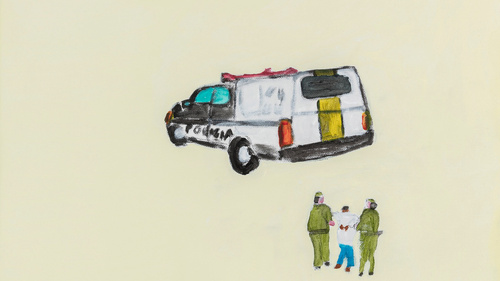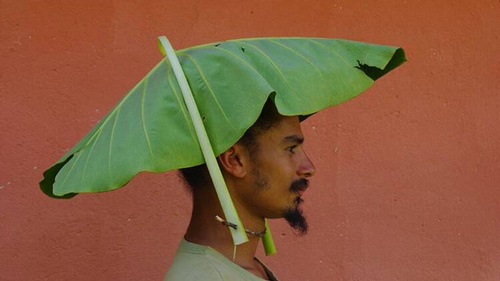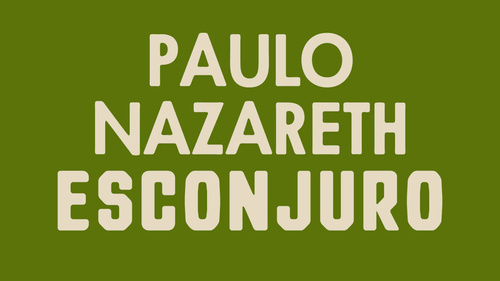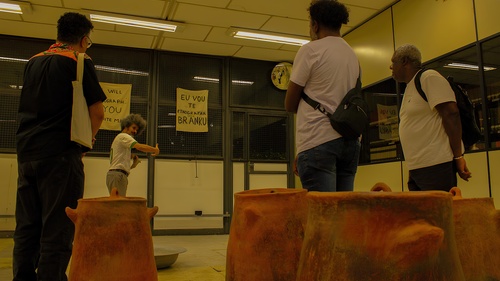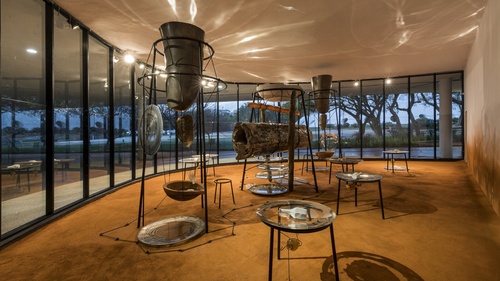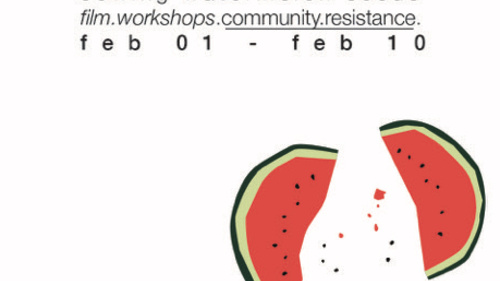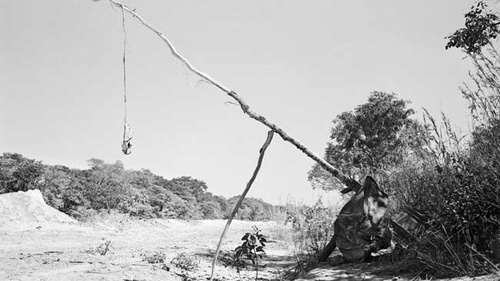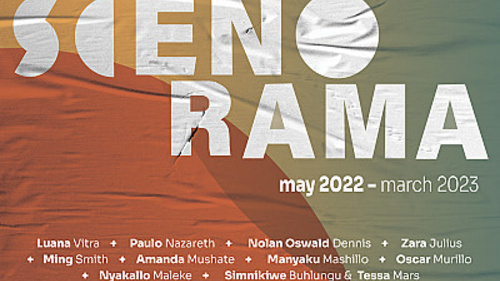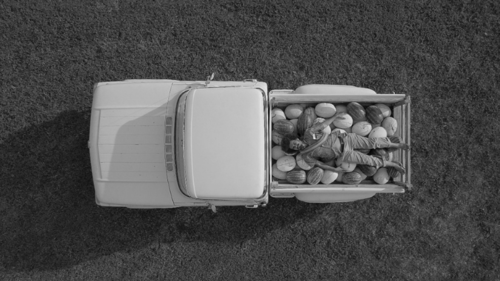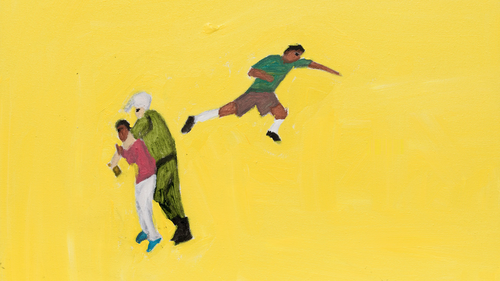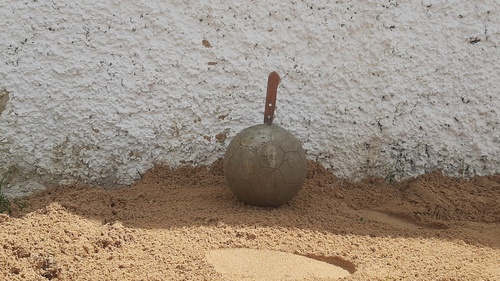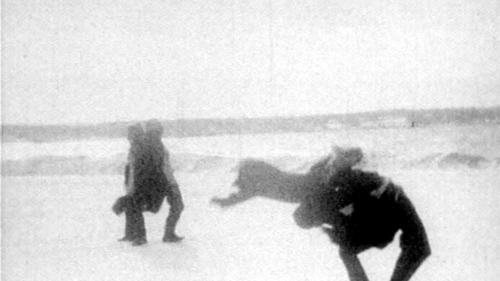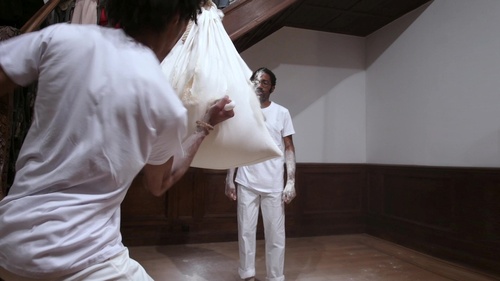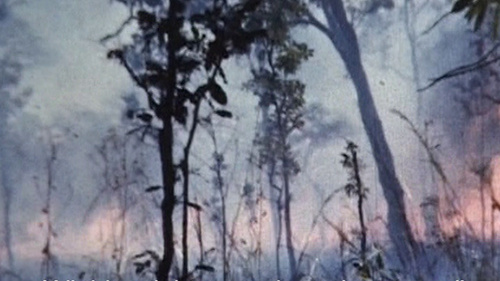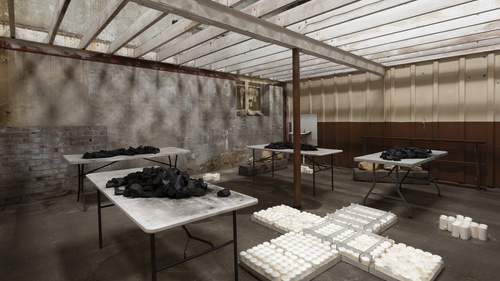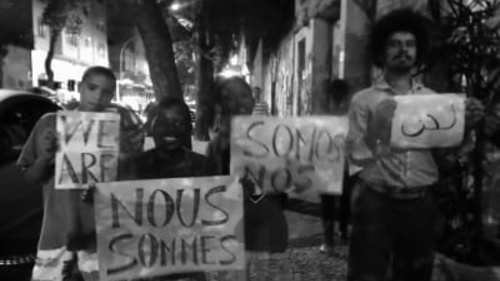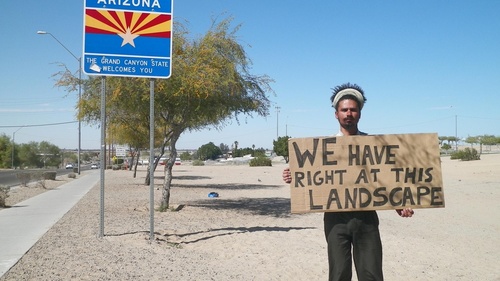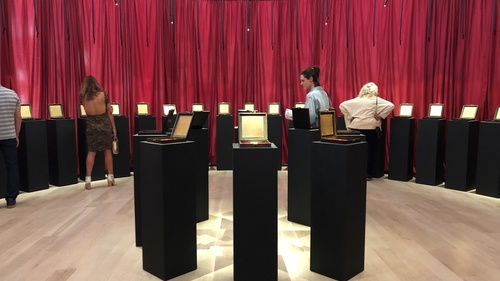Patuá/Patois, Paulo Nazareth's first institutional exhibition in Belgium takes place at Wiels. This survey, comprising new and existing works that represent over two decades of his practice, investigates how language and objects can operate as tools for survival.
Luzia, Paulo Nazareth's first institutional show in Mexico, takes place at Museo Tamayo. Spanning decades of work, the exhibition is conceptualised as 'historiographical speculation' that challenges scientific discourse while navigating Latin American identity.
Paulo Nazareth presents Esconjuro (Conjuration) at Inhotim Museum. He occupies various parts museum over the course of 18 months, divided into seasons, as a way of highlighting new ways of relating to the earth, its cycles.
Paulo Nazareth presents PEDAGOGIA at the Federal University of Minas Gerais. The project combines an overview of his existing works with those made during Nazareth's stay at the institution. PEDAGOGIA includes performances, open classes, screenings, workshops and an occupation of the university premises, with emphasis on the library.
Paulo Nazareth is included in Hands: 35 Years of the Afro-Brazilian Hand, held across the Museum of Modern Art of São Paulo (MAM) and the Emanuel Araujo Afro Brazil Museum. The exhibition celebrates and revisits the legacy of A Mão Afro-Brasileira (The Afro-Brazilian Hand), an exhibition held at MAM in 1988—the centenary year of slavery abolition in Brazil—with curatorship by Emanoel Araujo and which marked the history of art in the country.
Works by Steven Cohen, Simon Gush, Aziz Hazara, Moshekwa Langa, Paulo Nazareth, Thenjiwe Niki Nkosi, Penny Siopis are included in Sowing Watermelon Seeds a curated programme by 16/16 running parallel to the Lagos Biennial that features screenings and workshops on international solidarity.
Paulo Nazareth and Jo Ractliffe feature in the second chapter of The Struggle of Memory by the Deutsche Bank Collection. This iteration features 'artworks that explore in different ways the traces of history all around us while proposing alternative, sometimes subversive strategies of looking at the past'.
Paulo Nazareth is among the artists featuring in Scenorama at Javett-UP. Curated by Gabi Ngcobo, the evolving curatorial project and experimental platform presents 'networks of experiences, belief and knowledge systems'.
The Power Plant presents STROKE by Paulo Nazareth, his first institutional solo exhibition in Canada. The artist shows a selection of ongoing projects and a new body of work. The title is chosen to allude to the 'shock caused by racial violence on the human psyche and body'.
Paulo Nazareth presents VUADORA, an overview exhibition at Pivô. Curated by Fernanda Brenner and Diane Lima, the show features over 180 artworks by Nazareth created in the last two decades, as well as new works commissioned for the occasion.
Paulo Nazareth features in Pacaembu, a group exhibition at the Football Museum looking at the social and political histories of the sport.
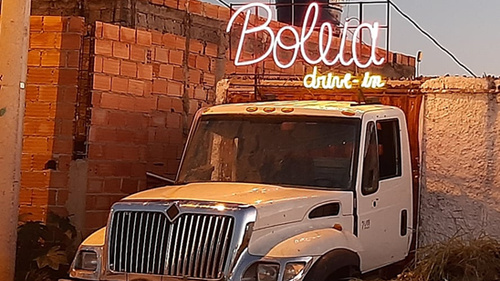
Paulo Nazareth presents SACI, at Casa Borun, Povo De Luzia. The solo exhibition of site specific works runs parallel to the programme of the 34th upcoming Bienal de São Paulo. The exhibition focuses on 'care and respect with the other even in times of closings and distances'.
15 November - 14 December 2020
Paulo Nazareth features in Wind, at the Ciccillo Matarazzo Pavilion, Ibirapuera Park, as part of the programme of the 34th Bienal de São Paulo. The exhibition focuses on immaterial works, emphasising a sense of space and distance.
Paulo Nazareth and Frida Orupabo feature in Though it's dark, still I sing, the 34th Bienal de São Paulo. The exhibition includes the work of over 90 artists 'claiming the need for art as a field of encounter, resistance, rupture and transformation'.
Global(e) Resistance, at the Centre Pompidou in Paris, looks at 'contemporary strategies of resistance' in recent acquisitions from the museum's collection. Artists include Penny Siopis, Kemang Wa Lehulere, Meschac Gaba, Barthélémy Toguo and Paulo Nazareth.
Zanele Muholi and Paulo Nazareth exhibit in the 22nd Sydney Biennale, titled NIRIN, from the Wiradjuri for 'edge.' The biennale asserts that 'artists have the power to resolve, heal, dismember and imagine futures of transformation for re-setting the world'.
Paulo Nazareth and Kemang Wa Lehulere are among the artists showing in Beyond the Black Atlantic at Kunstverein Hannover. The exhibition 'seeks to give voice to a young generation of Black artists with their own, contemporary approach to the topic of identity beyond the focus of current museum debates'.
Paulo Nazareth features in The Warmth of Other Suns: Stories of Global Displacement at the Phillips Collection. Through the work of 75 artists the exhibition seeks to pose 'urgent questions around the experiences and perceptions of migration and the current global refugee crisis'.
Paulo Nazareth has his first solo US museum exhibition at the ICA Miami. He presents a series of commissions that consider an alternative political history of Latin America, emphasising its marginalised protagonists, among other works.
